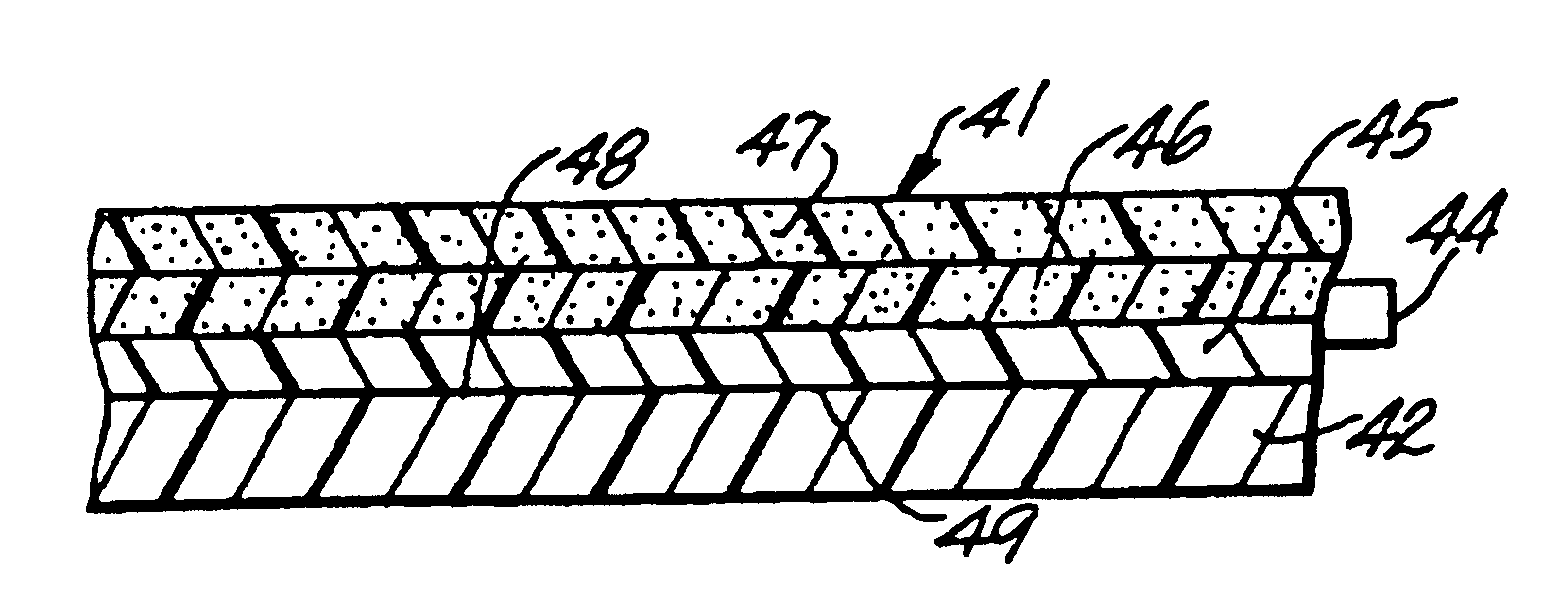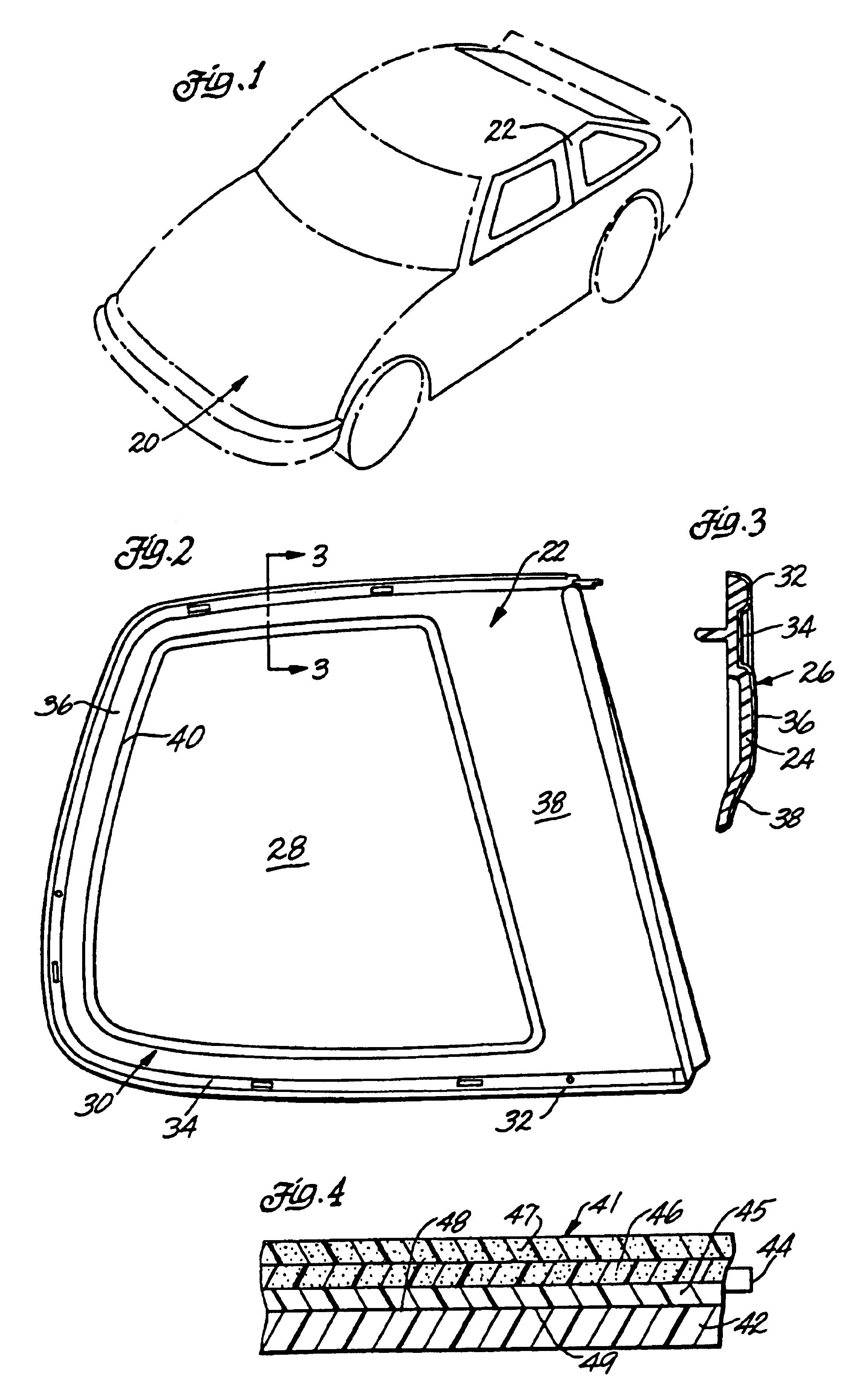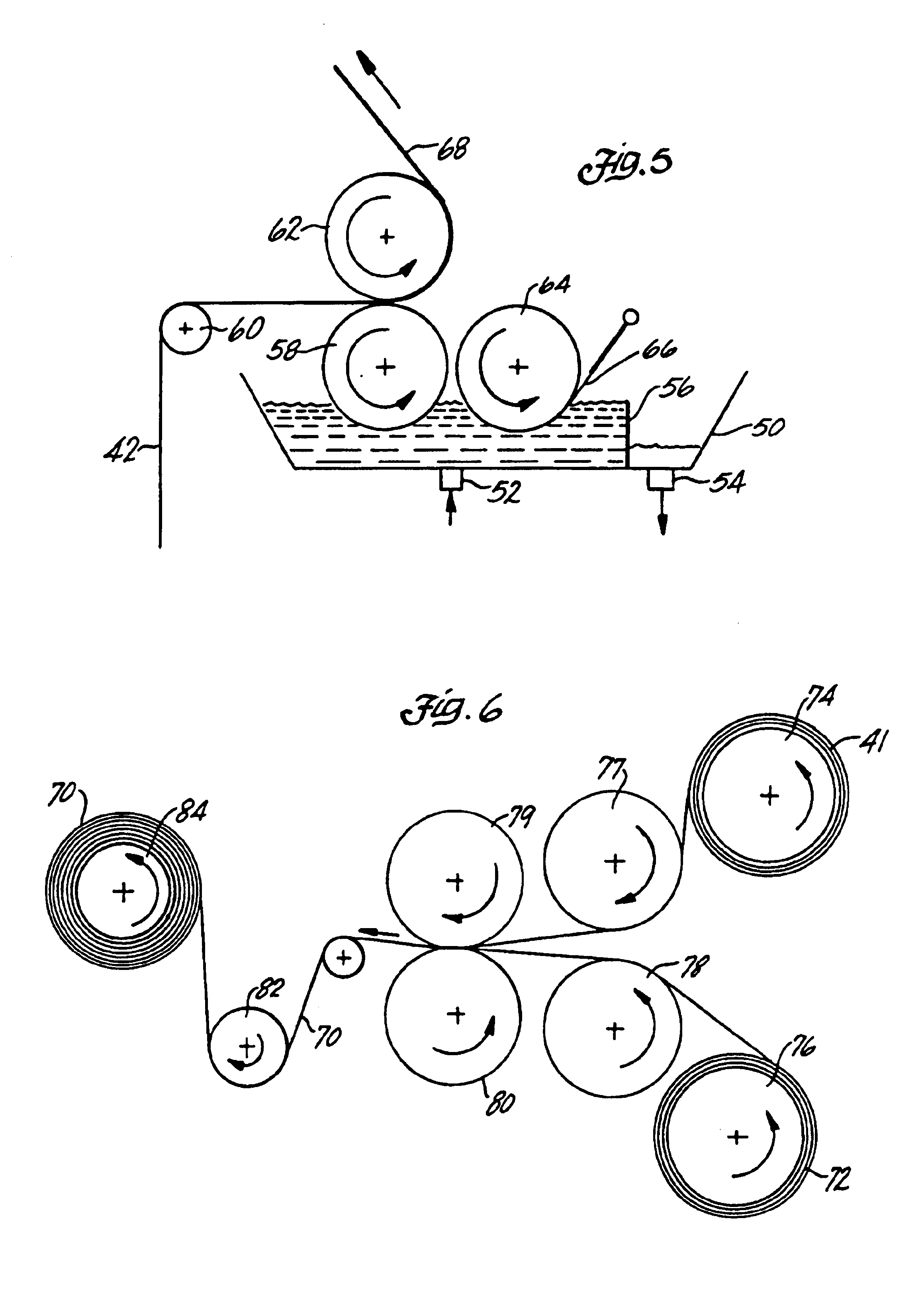Dry paint transfer process and product
a technology of dry paint and transfer process, applied in the direction of machines/engines, electrical control, applications, etc., can solve the problems of plastic trim parts that cannot be used for exterior automotive use, plastic trim parts that have experienced difficulties in maintaining reflectivity and avoiding surface defects, and achieve the combination of elongation and resistance to deglossing, and retain durability and appearance properties.
- Summary
- Abstract
- Description
- Claims
- Application Information
AI Technical Summary
Benefits of technology
Problems solved by technology
Method used
Image
Examples
example 1
A high gloss jet black laminated exterior automotive paint coat was formed on the exterior surface of an experimental plastic rear window molding for a Pontiac Grand AM. The window molding was similar to that shown in FIG. 2. The paint coat was first coated onto a surface of a flexible polyester film casting sheet. The flexible carrier comprised two mil thick high gloss American Hoechst 3000 polyester film. The paint coat comprised a clear coat, a color coat, and a size coat coated onto the polyester film casting sheet in that order. A thin film of wax was first coated on the polyester film. The wax coating formulation comprised, on a weight basis, 40% xylene, 59.4% cyclohexanone, and 0.6% carnauba wax. The wax was dissolved in the solvents at 120° F. and cast on the polyester film using a gravure coating cylinder. The wax coating was applied as a thin film approximately 0.001 mil thick. The wax-coated casting sheet was then passed through a drying oven and dried at 250° F. with a l...
example 2
A high gloss red laminated exterior automotive paint coat was formed on the exterior surface of a highly contoured plastic automobile body panel. The laminate was matched to a General Motors Fiero red body color and used to make a prototype injection-clad Fiero rear quarter panel. The paint coat was first coated onto a casting film comprising a two mil thick high gloss American Hoechst 3000 polyester film. A clear coat, color coat, and size coat were coated onto the casting film in that order. The clear coat was prepared from the following formulation:
IngredientPartsCyclohexanone15.47BLO (Butyrolactone)7.52DIBK (di-isobutyl ketone)21.66Polyethyl methacrylate12.95(Elvacite 2042)UV absorbers1.1PVDF (Kynar 301F)24.05BLO17.24
The Elvacite acrylic resin was dissolved in the BLO, DIBK and cyclohexanone solvents, while mixing and under heat at approximately 130° F. The resulting mixture was allowed to cool overnight. The UV absorbers were then added to the mixture and the PVDF was dispersed...
example 3
Tests were conducted to determine the relative proportions of the PVDF and acrylic components of the clear coat and the color coat capable of producing a composite paint coat that can be cast as a film, laminated to a backing sheet, thermoformed, and injection-clad to form a finished article with an exterior automotive paint coat surface. In this example, standard spray type automotive acrylic enamel paints manufactured by DuPont were used as a paint coat in the process of this invention. These types of paint systems are commonly used at present as exterior automotive paint. The paint coats were thermoset and they cross-linked at low temperatures on the carrier when dried. These paint coats were then transferred from the carrier to a 20 mil thick ABS backing sheet which was then drawn on a vacuum-former. The paint coat was too brittle to elongate properly; it cracked and shattered at stress points in the laminate when thermoformed.
Similar DuPont urethane-based automotive paints norm...
PUM
| Property | Measurement | Unit |
|---|---|---|
| gloss | aaaaa | aaaaa |
| thickness | aaaaa | aaaaa |
| thickness | aaaaa | aaaaa |
Abstract
Description
Claims
Application Information
 Login to View More
Login to View More - R&D
- Intellectual Property
- Life Sciences
- Materials
- Tech Scout
- Unparalleled Data Quality
- Higher Quality Content
- 60% Fewer Hallucinations
Browse by: Latest US Patents, China's latest patents, Technical Efficacy Thesaurus, Application Domain, Technology Topic, Popular Technical Reports.
© 2025 PatSnap. All rights reserved.Legal|Privacy policy|Modern Slavery Act Transparency Statement|Sitemap|About US| Contact US: help@patsnap.com



